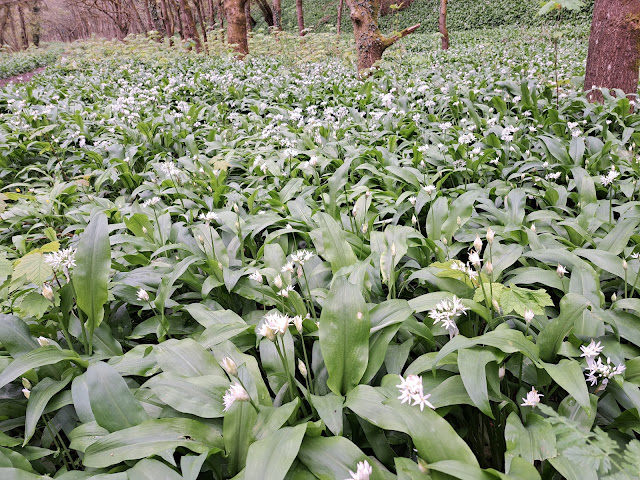News about seasonal changes at Filnore Woods and how to get involved as a volunteer, if you want to. As well as things seen and done at FILNORE WOODS, THE BLOG WILL INCLUDE THINGS YOU CAN SEE IN YOUR STREET OR GARDEN. To get regular updates, you used to be able to enter your email address in "FOLLOW BY EMAIL" (just below on the right) But this seems to have stopped working so GOOGLE 'FILNORE WOODS BLOG' AND FOLLOW 'FILNORE WOODS' ON FACEBOOK
Sunday, 30 April 2023
EARLY BUTTER
Saturday, 29 April 2023
HARTS TONGUE FERN
Friday, 28 April 2023
ENGLISH BLUEBELL
- English bluebells usually droop over to one side at the top while Spanish stand erect with flowers all round the stem
- The petals on the tubular English curl right back while on bell-shaped Spanish and hybrid they flare out but don't curl right back
- If you look inside, the English bluebells have creamy white anthers and the Spanish and hybrid have blue or greenish anthers (Except they all produce white flowering forms sometimes which have white anthers).
- Spanish and hybrid have broader leaves (1-3.5cm) than English (0.7-1.5cm) - but this is only easy if you get your eye in.
Thursday, 27 April 2023
OUT AND ABOUT ALREADY
BLACKTHORN STILL IN FLOWER
Wednesday, 26 April 2023
COWSLIPS

PIGNUT
Tuesday, 25 April 2023
ST MARK'S FLY
Today, 25th May, is St Mark's Day, and because this particular insect appears on or around this day and only lives for about a week, having spent a year as an underground larva, it is named after the saint.

The larvae feed on grass roots and any decaying vegetable material during autumn and winter and then the following year they emerge, just like their parents on St Mark's Day. As they only live for such a short time it's a wonder that they time their emergence together.
Although these St Mark's Flies are big, black and hairy they are quite harmless and rather unruffled by human presence. You can pick them up quite easily.
Monday, 24 April 2023
DAWN CHORUS
Now is the best time of year for birdsong. They, mostly the males, sing to attract mates, to stake out territory against rivals. The best time to hear them is just before sunrise. Once the sun is up they have to get busy foraging for food for themselves and their nestlings, so no time for singing.
They start more or less in this order. I hope my clues about their voices may be helpful


Sunday, 23 April 2023
THE HAIRY-FOOTED FLOWER BEE
As well as the bee-fly there is another insect with a very long tongue noisily hovering round the lungwort flowers. This one, the hairy-footed flower bee (Anthophora plumipes) has a different appearance. The females are black but the males are coloured more like a honey bee but not so spherical as the bee-flies. Males seem to have a whitish kind of face and you can see in the photo on the right why this bee is called 'hairy-footed'. Also the long tongue of Anthophora is a bit more curved than the needle-like proboscis of the bee-fly.

%20crop%203.jpg)











































